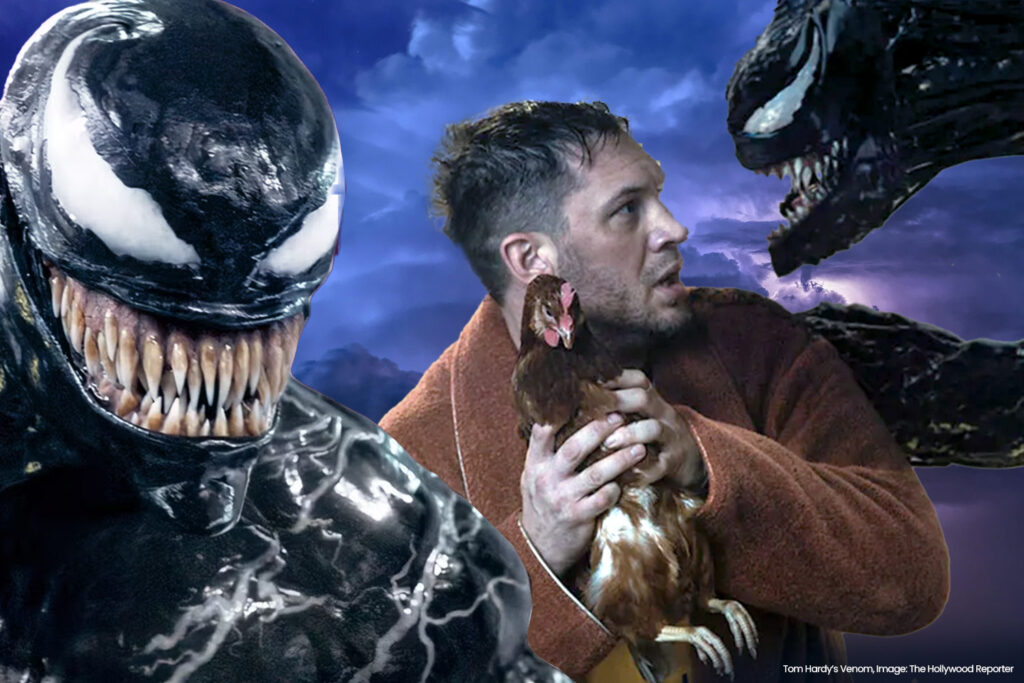Eddie Brock’s journey has been a whirlwind in Sony’s Spider-Man Universe (SSU). The last few years have been a mixed bag for fans invested in the only officially Spidey-adjacent anti-hero on the big screen. The studio holds the keys to dozens of Spider-Man co-stars — but not Spidey himself for solo outings — so since 2018, they’ve built a sort of multi-fractured “Sony-Verse” on shaky ground around Venom while omitting the web-slinger from his own repurposed origin inside the MCU.
Lost somewhere in that complicated interplay, is the SSU needing to allude to a certain web-slinger who is “out there” but certainly won’t be swinging by anytime soon. And, thus, three Venom films have come, each taking a different swing at the madcap, often comedic path of Eddie and Venom. Here is the breakdown of the trilogy from its least successful entry to its shockingly enjoyable installment.
Venom: The Last Dance (2024)
Venom: The Last Dance is the most recent, and the least of these trifecta’s latest effort. As a culmination for the movie, it is disappointing in every way — narratively and financially, earning only $316 million dollars at the box office. This third entry follows the unfriendly road of franchises like Blade, abandoning on-screen dynamics responsible for Eddie and Venom’s unique relationship.
On the whole, Eddie fights an invisible bad guy in The Last Dance, with only generic superhuman villains (with no personality) as his foes. The film suffers from a minor case of feature creep, leaving screen time few and far between for Eddie and Venom together and dumbing down what was so fresh about their humor; but the action compared to emphasize both matters stays high.
The film suffers from bad comic relief, awful music choices and no conflict, as it carries a 40% Rotten Tomatoes score and 6.2 on IMDb. Critics likened it to Blade: Trinity, a film that was also unable to properly end its franchise. The Last Dance is a not-so-great farewell, and offers almost nothing that fans did not witness done better in the above films.
Venom (2018)
Venom, which began the Spider-Man-less Sony Universe of Marvel Characters (or SSU for short) in 2018 by basing its take on the character mostly off his comic book persona rather than his film one, still revolves around Eddie Brock but does not feature Spider-Man once. While not exactly a critically beloved superhero film (30% at Rotten Tomatoes, 6.6 on IMDb) Venom largely found its heart in the performance of Tom Hardy.
This origin story follows Eddie, a reporter down on his luck, as he becomes one with the symbiotic alien Venom and sparks both love and hate in the relationship that ensues. It falters in pacing with venom almost an hour before fully being there, combined with choppy editing that dulled down the action scenes. But, Hardy performing both his Eddie character and Venom gives the film a very different beat, resulting in an unpredictable rhythm which ends up making the movie.
Venom is a bad origin story and had a lot of problems with slow pacing and horrible special effects, but thanks to Hardy’s odd take on Eddie as well as the strange bond between him and Venom makes it worth at least one viewing. But the film turned around and made a whopping $856 million at the box office, signalling its appeal despite its flaws and giving us an idea of what was in store for us as a franchise.
Venom: Let There Be Carnage (2021)
Venom: Let There Be Carnage raises the stakes of the Venom series and, though perhaps not a cinematic high point it’s still most entertaining, takes top place on all fronts. Directed by Andy Serkis, this film cranks up the speed and uses a colourful, frenetic style that suits the characters’ anarchic enthusiasm. While garnering a rather “meh” 58% on Rotten Tomatoes and a 5.9 on IMDb, this installment was still praised for featuring fan-favorite villain Carnage, who Woody Harrelson portrayed with his trademark brand of eccentricity.
Harrelson is entertaining, if not particularly frightening, as Carnage, who is mostly just the symbiote with Kavinsky’s penchant for seeing red stuffed inside. The buddy comedy nature of Eddie and Venom’s relationship; their bickering at each other throughout the story gives lighthearted levity instead of conciseness. The action moves briskly throughout the film’s 90-minute runtime, lending a vivacity to the full-length feature that stands in stark relief against the slower rhythms of its predecessor.
The sequel shines too with the film boasting a vibrant visual style courtesy of cinematographer Robert Richardson helping to give Let There Be Carnage that sense of polish. Earning $506 million at the box office, it showed the Eddie-Venom combo still had an audience for more monstrous shenanigans. While not particularly profound superhero fare, the film is self-aware enough and provides fans with one of the best symbiote fights in the series to date.
It may not on the same level as a Marvel production, but Sony’s Venom trilogy has created a unique lane for Eddie Brock and Venom in the superhero genre. While there have been some critical stumbles along the way, Tom Hardy would seem to care less about any of that — and fans are eager to take more. While the SSU may not have any sound foundations to fix, we cannot deny and hate that Venom crafted a legacy as one of Marvel’s more chaotic and darkly comedic anti-heroes—a perfect occupant for a life built on mess and mayhem.
Follow The Flash Sports for further updates about all things Entertainment and Sports!










